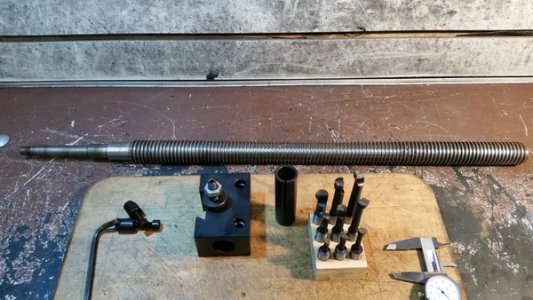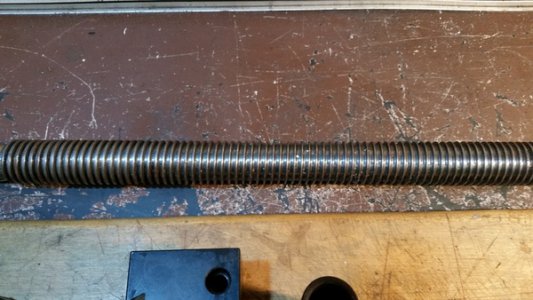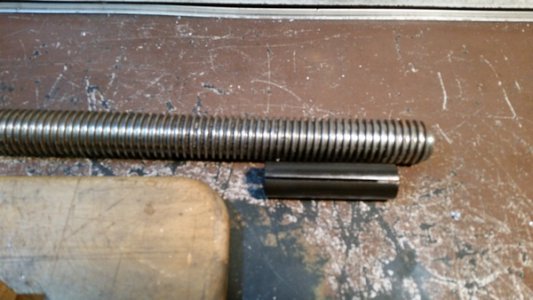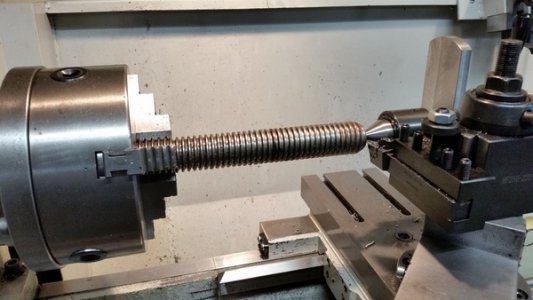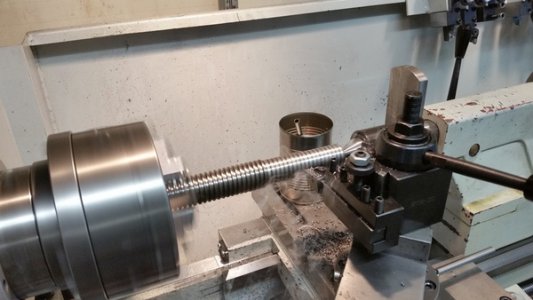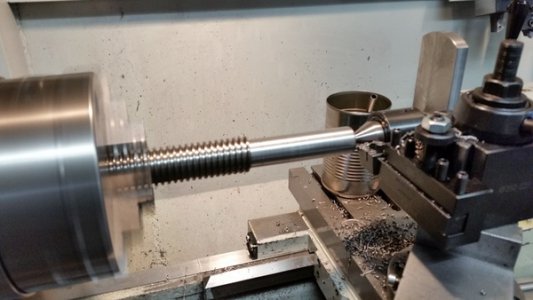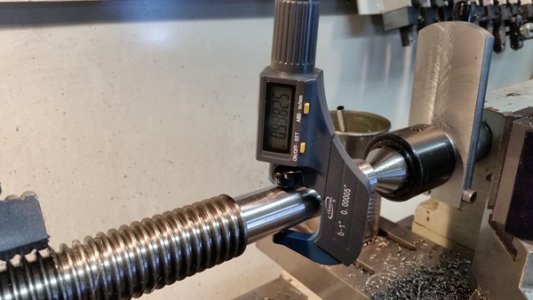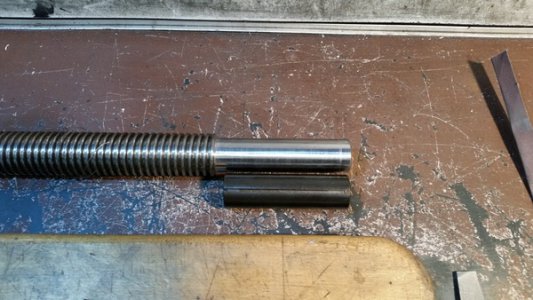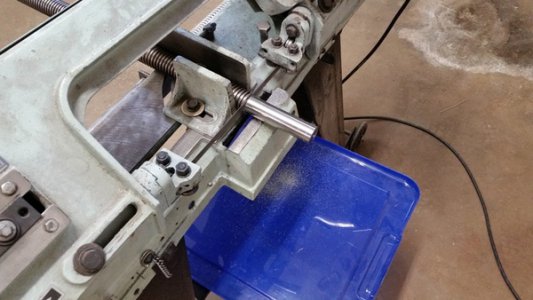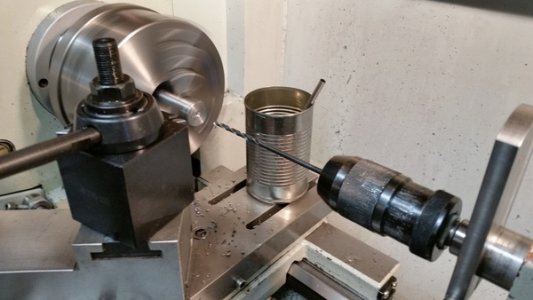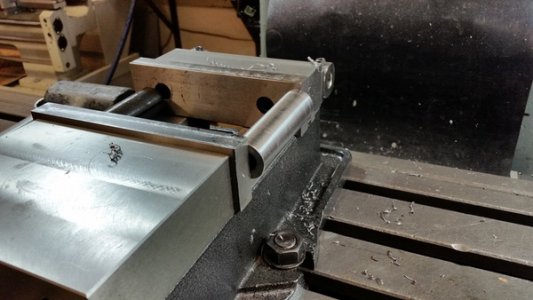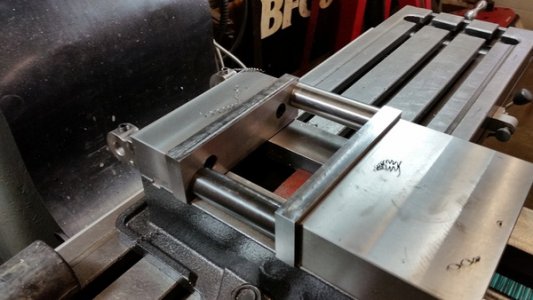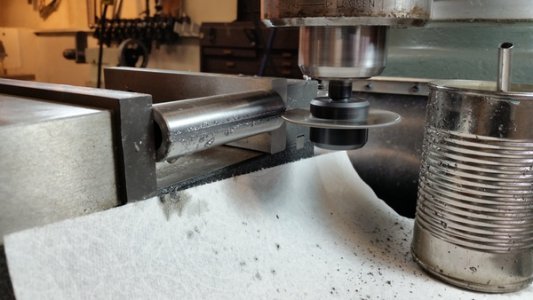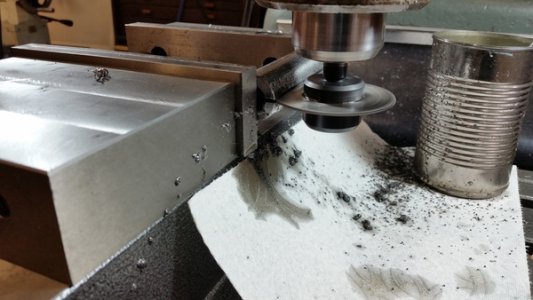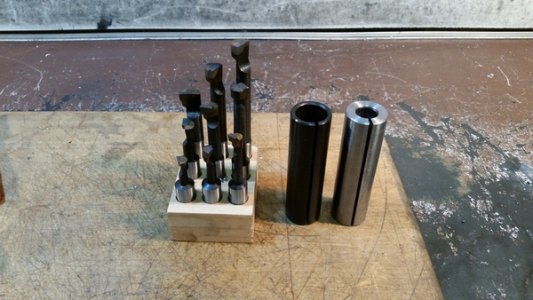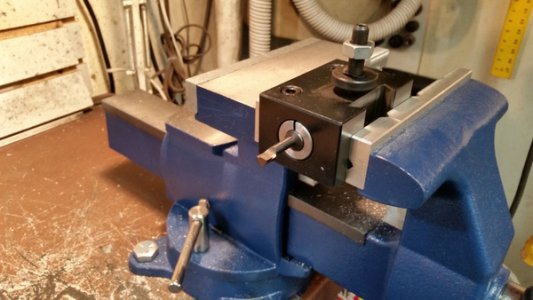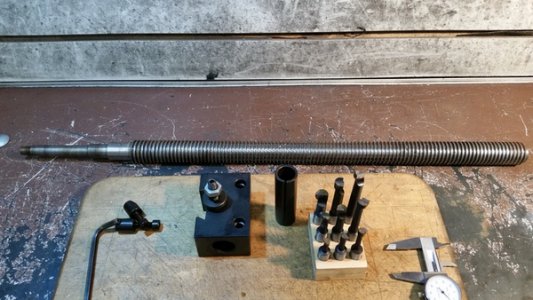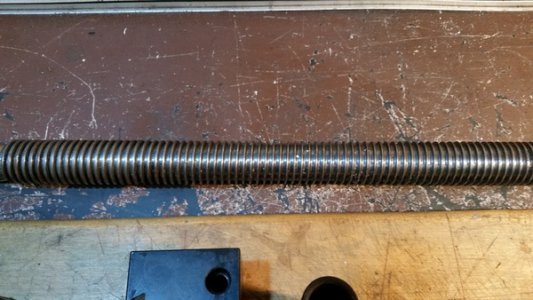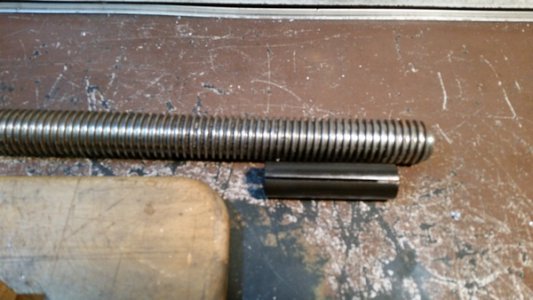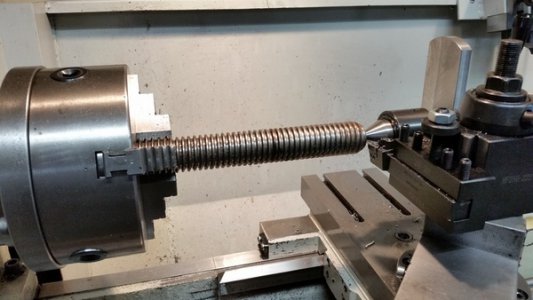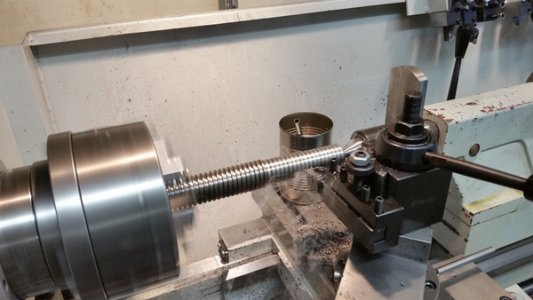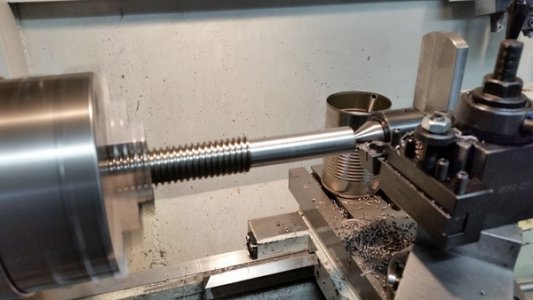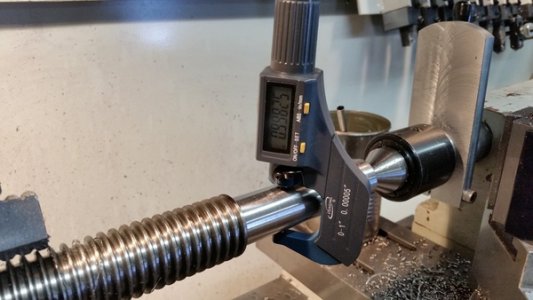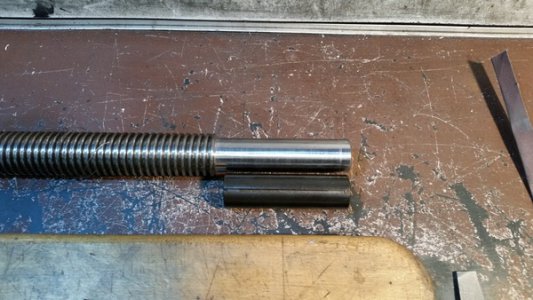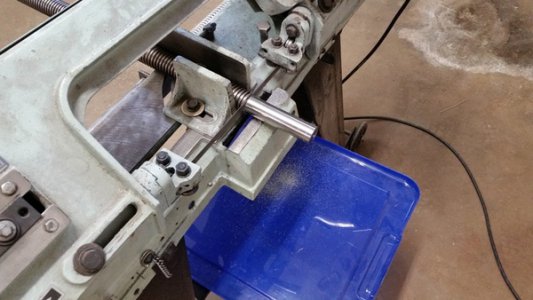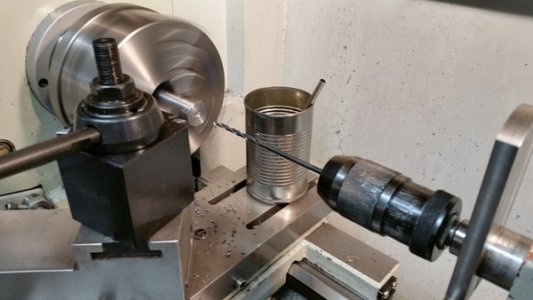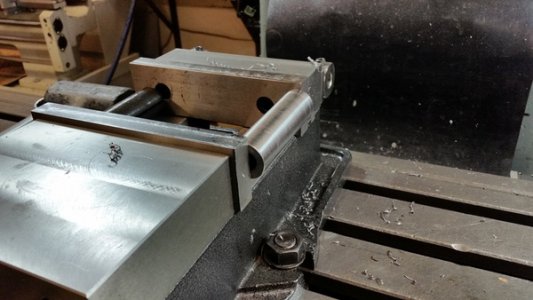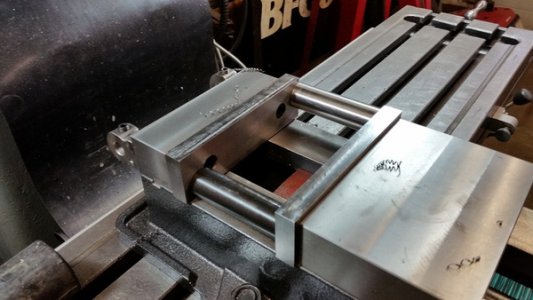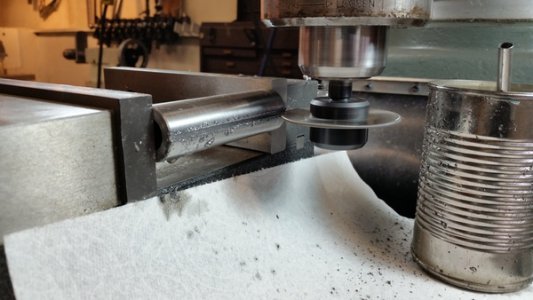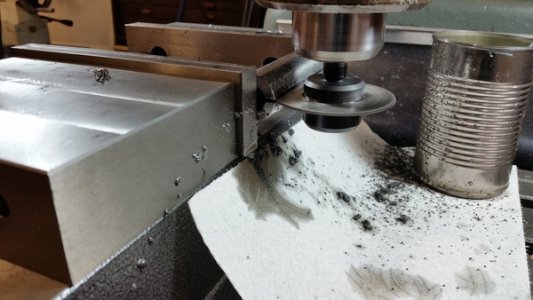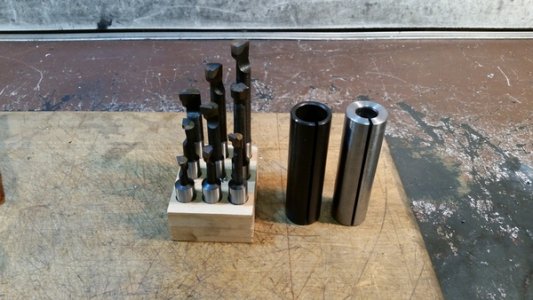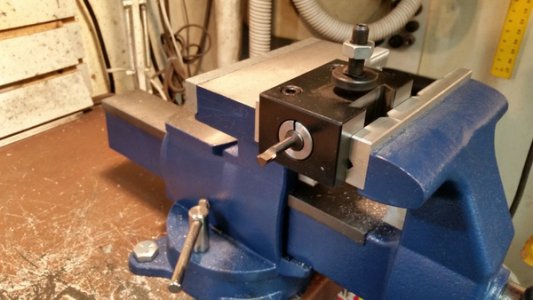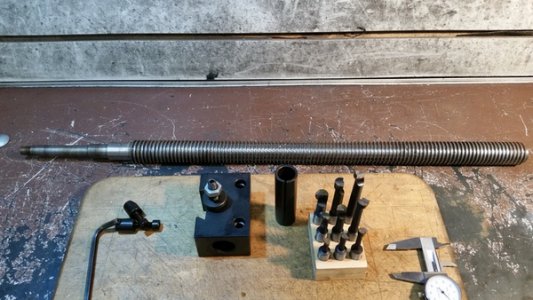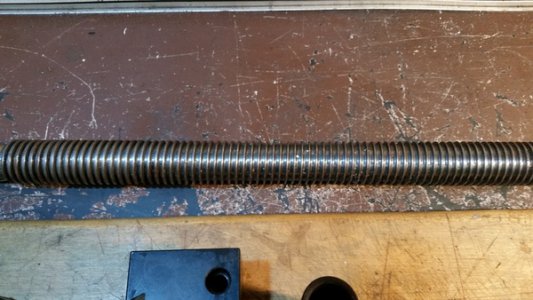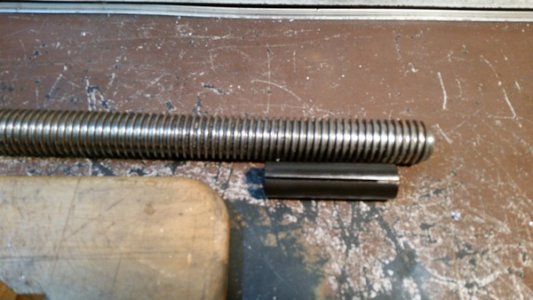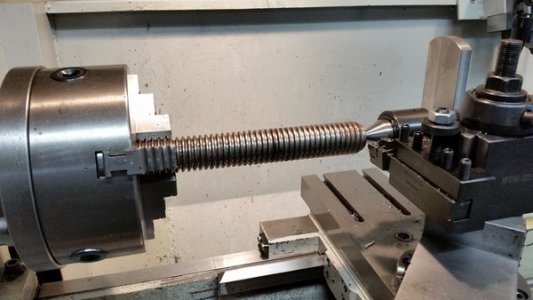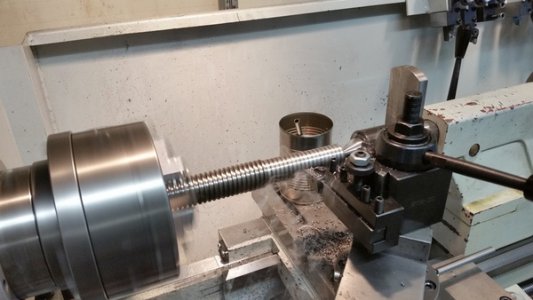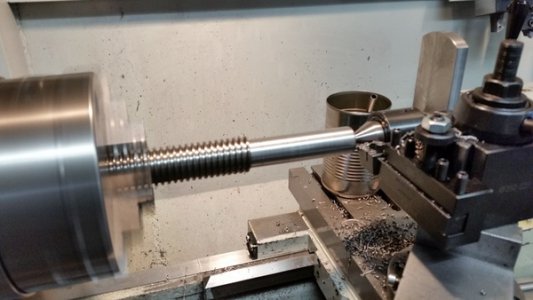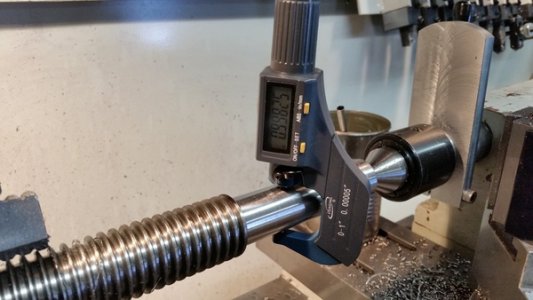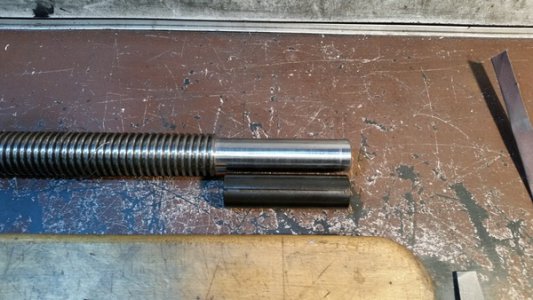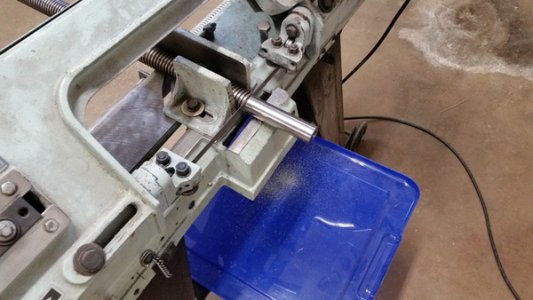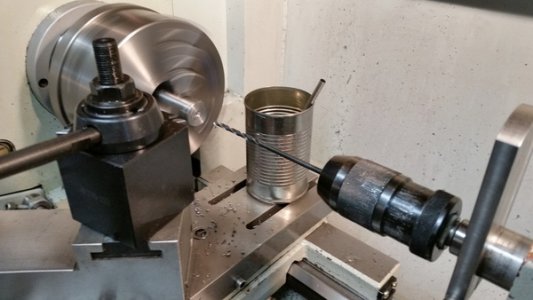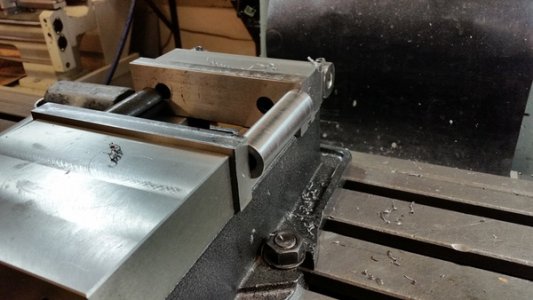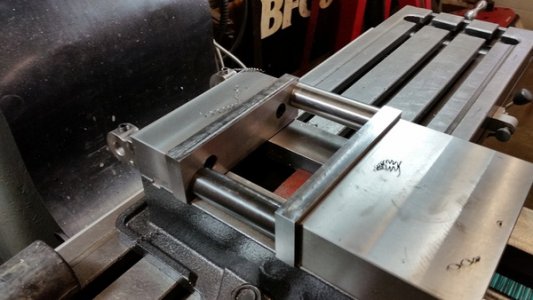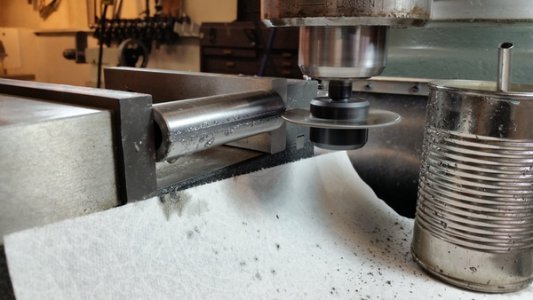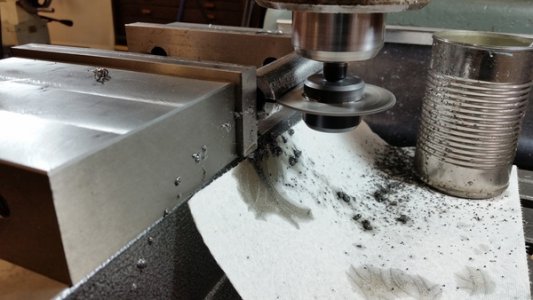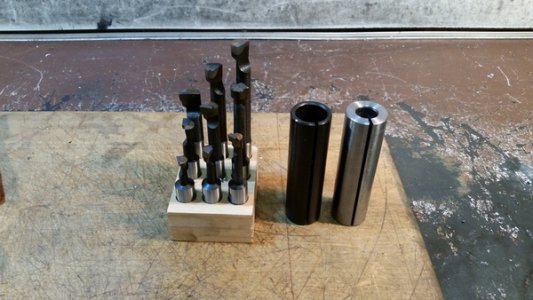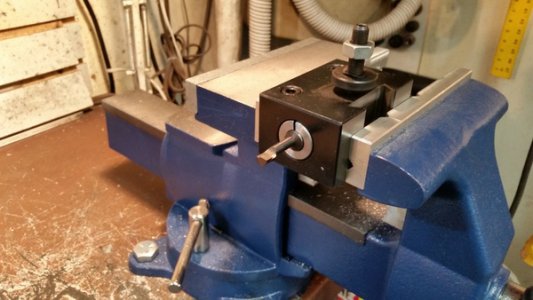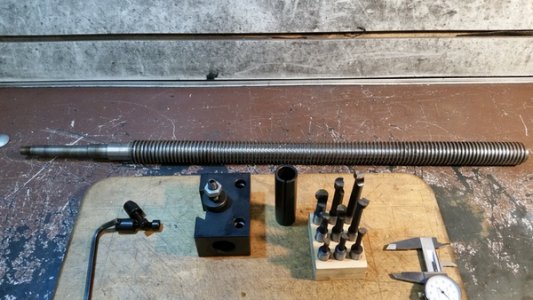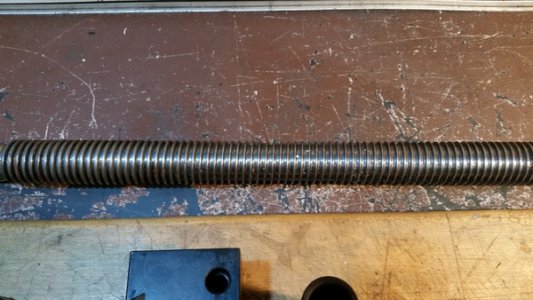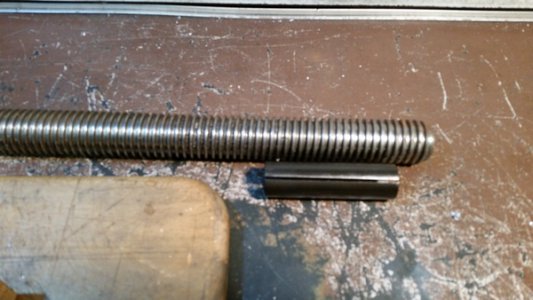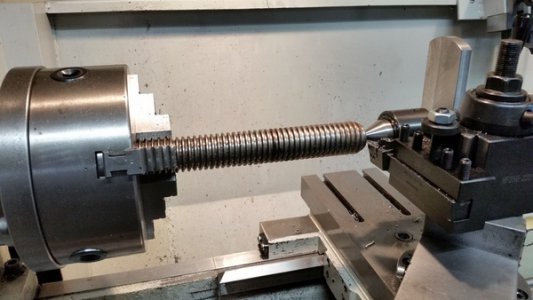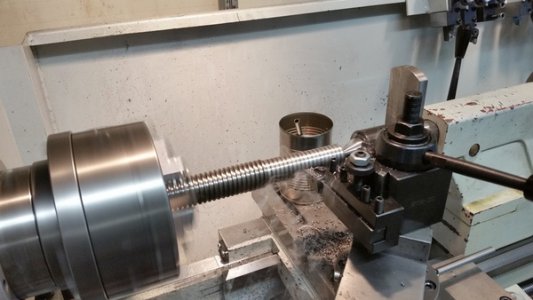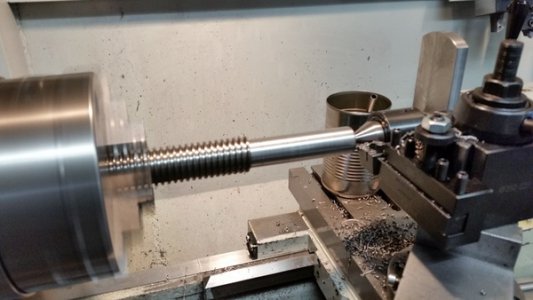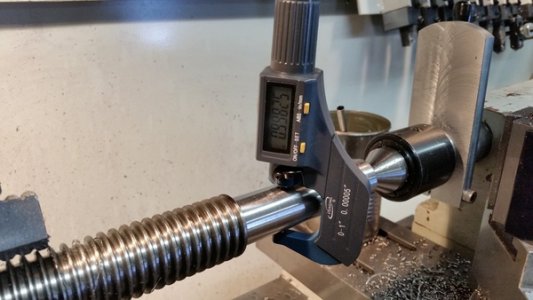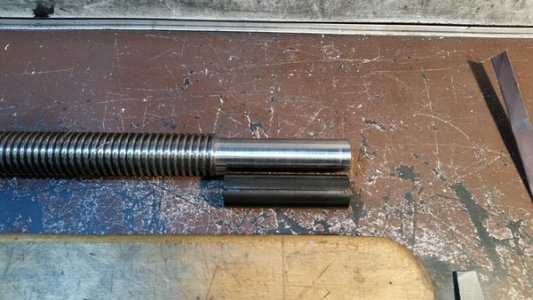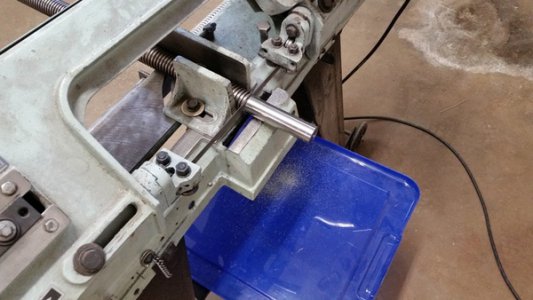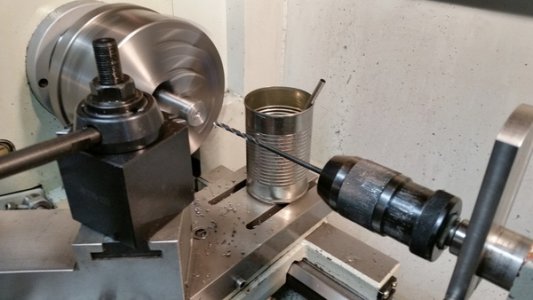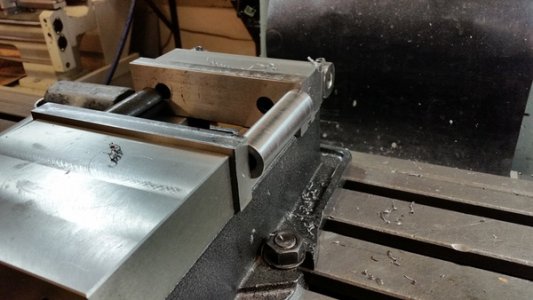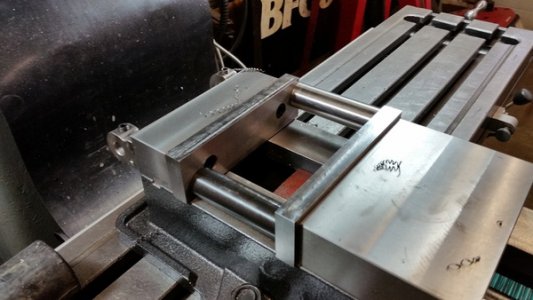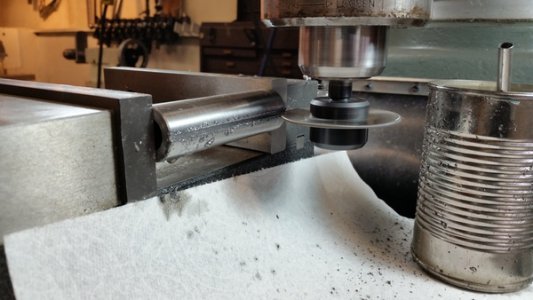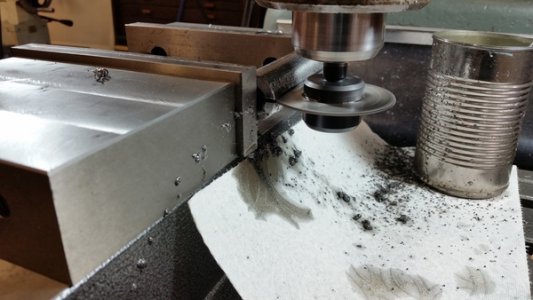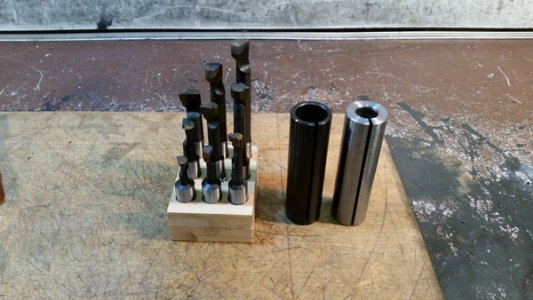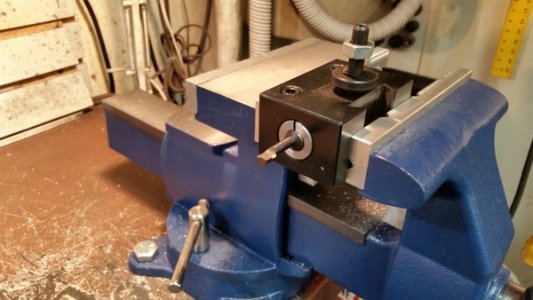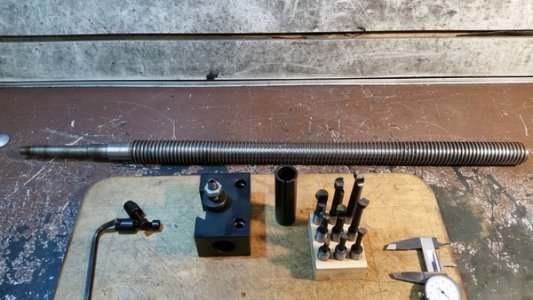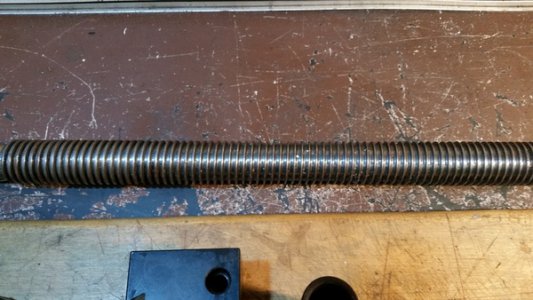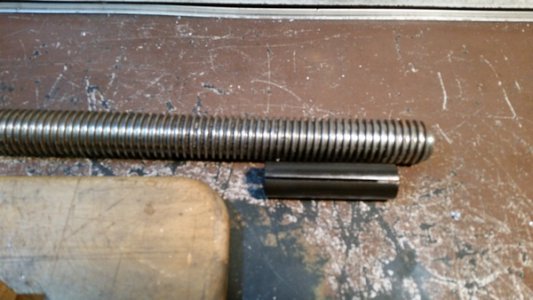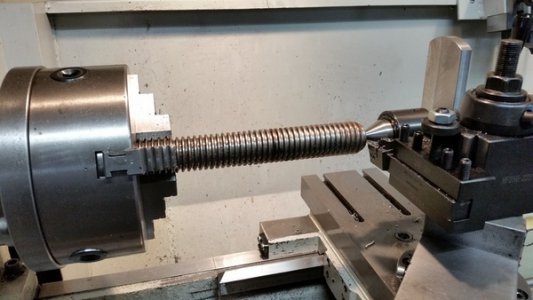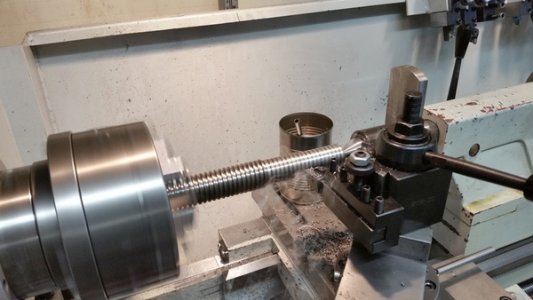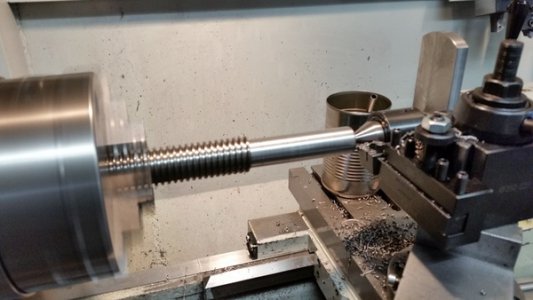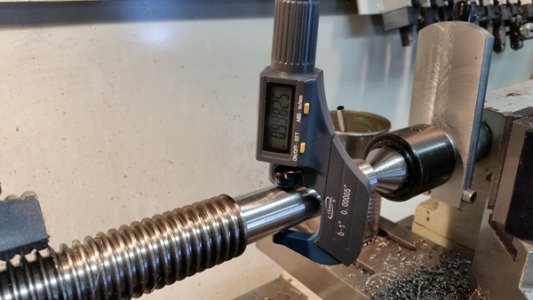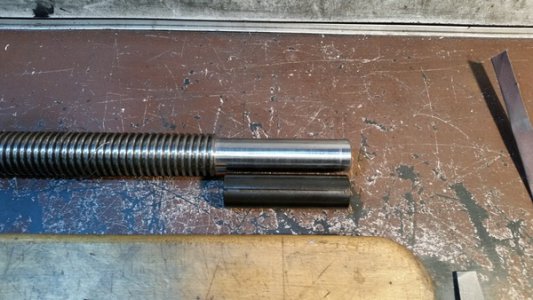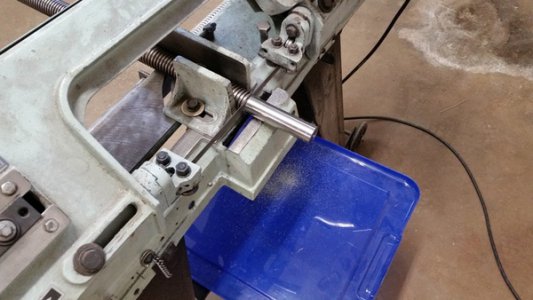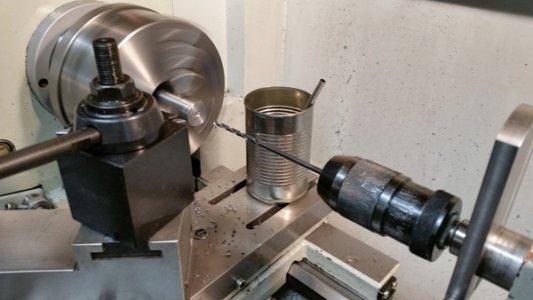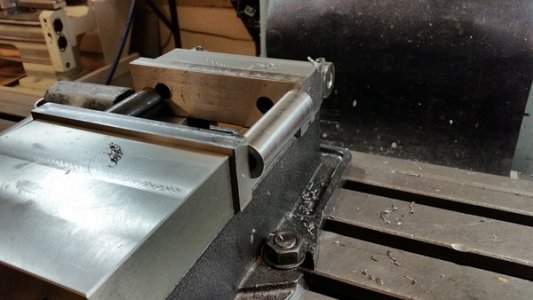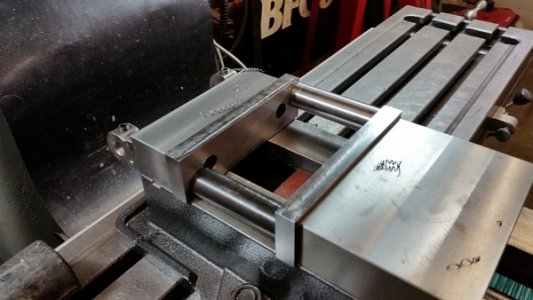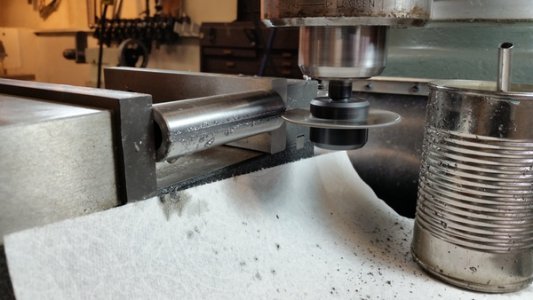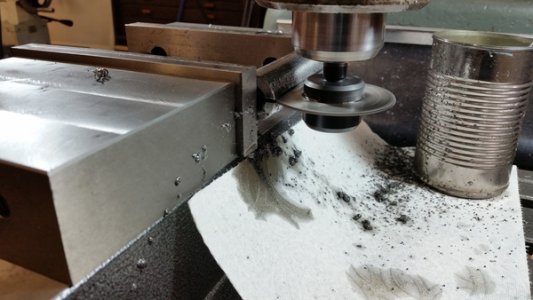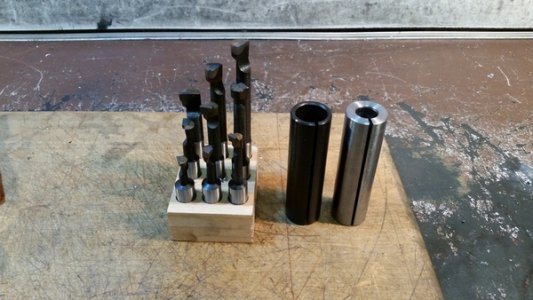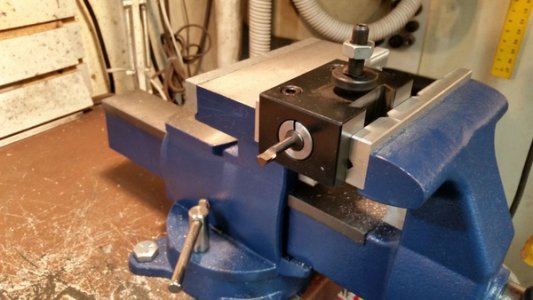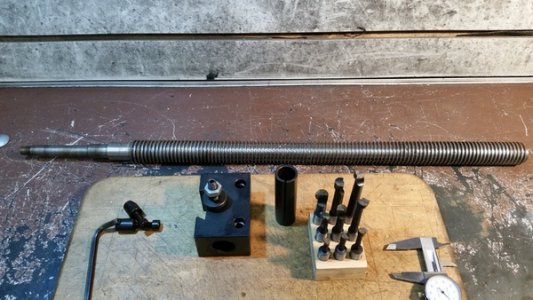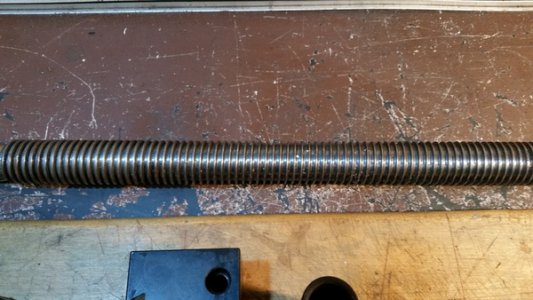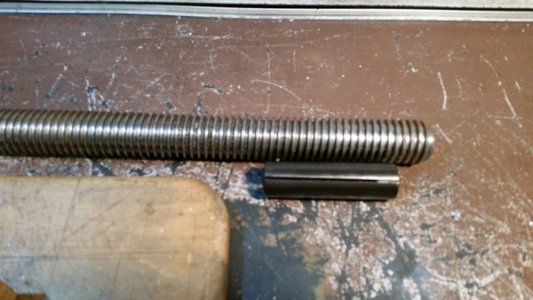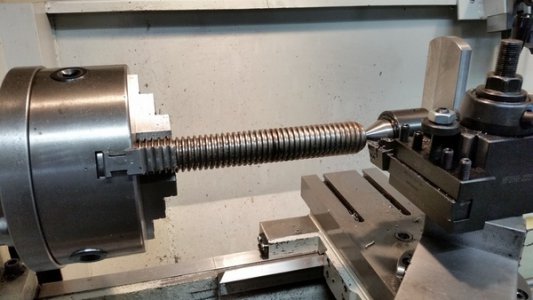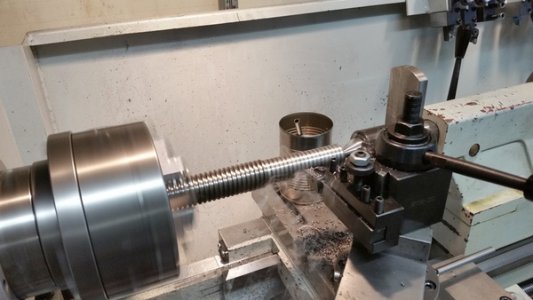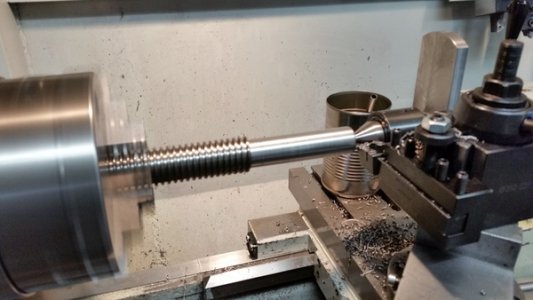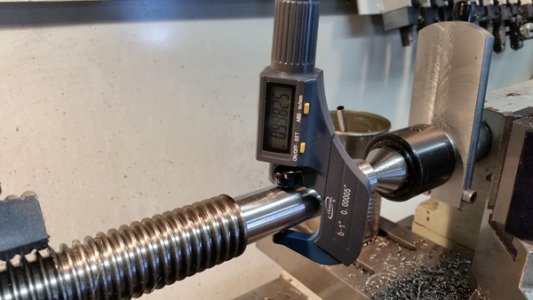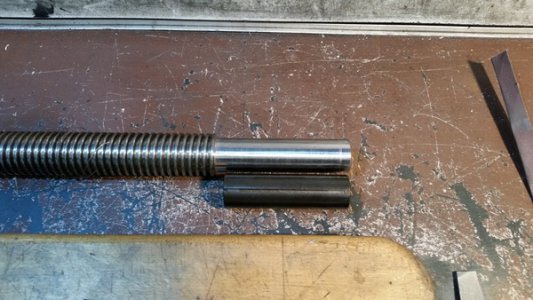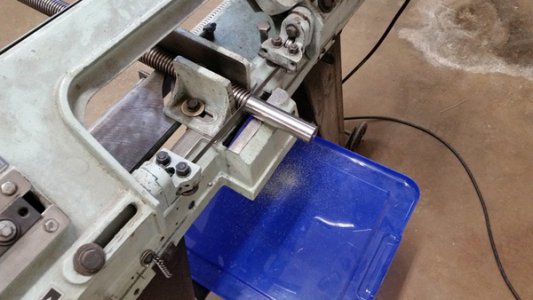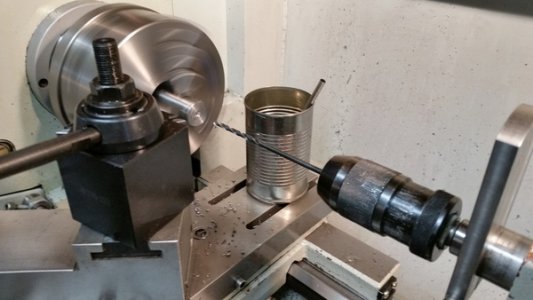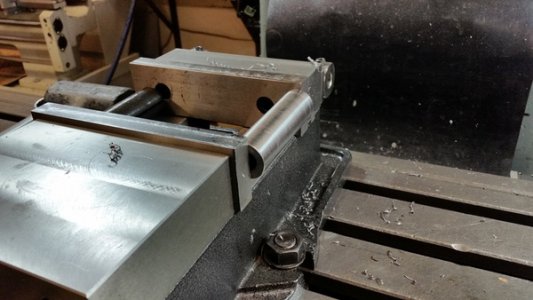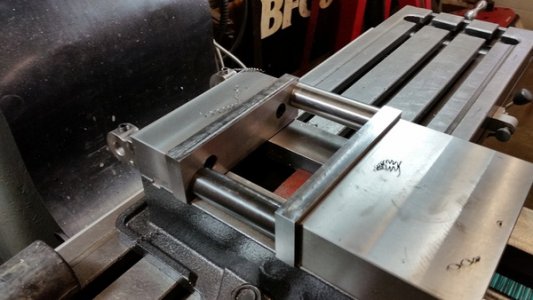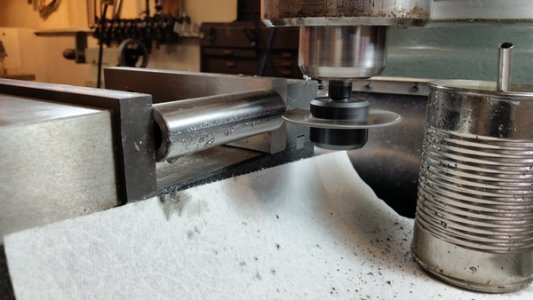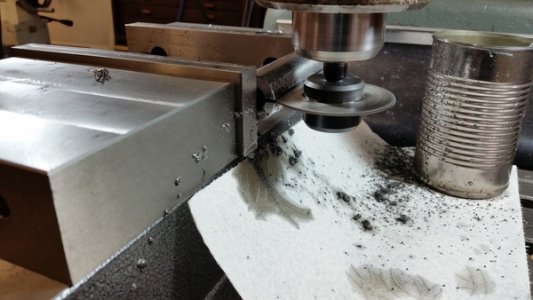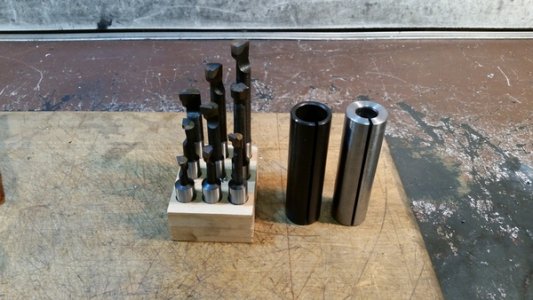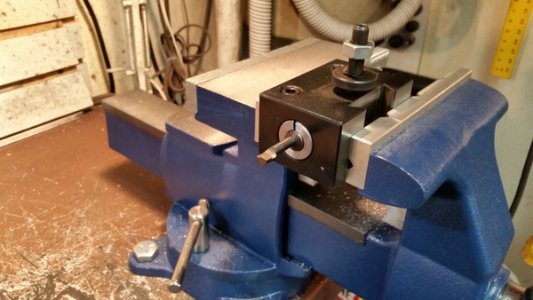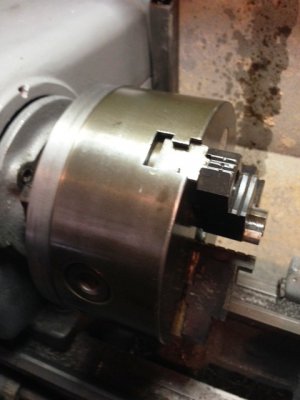Testing and adjusting my 5" (125 mm) 4 jaw chuck
Some time ago after cleaning my 4 jaw chuck (removing all jaws) I noticed that although I indicate a round bar and the TDI shows 0.0004" (0.01) mm near the chuck jaws when I move further away from the chuck to a distance of a few inches, the readings multiply by a factor between 10 and 50!!!
This indicates a very serious misalignment of the chuck or jaws.
I do not recall making measurements both next to the chuck jaws and to the end of the bar, as when I needed to machine a long bar I always support it to the tailstock.
After some tests while I put each of the 4 jaws in different positions and make measurements I noticed that the readings, at the end of the bar, change in a more or less random way according to where each jaw is fitted!!!.
There was no way to keep the near-zero indication at the end no matter the jaw position!!!
To find the position with the smallest error I planned a more systematic measurement approach.
First I always bolt the chuck at the same position on the plate as you can see from the marks both at the chuck and the plate.
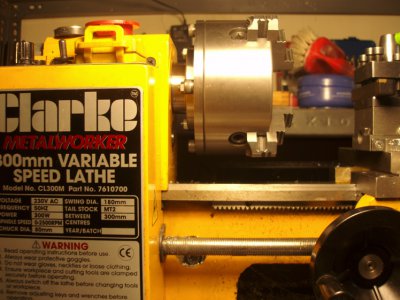
Next I named the positions on the chuck I, II, III and IV and the jaws 1, 2, 3 and 4.
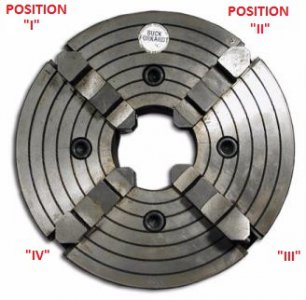
I thought initially that the possible combinations between positions and jaws are 4X4= 16 but after a small research I found out that all possible combinations of the numbers 1, 2, 3 and 4 are calculated this way:
We will use each of the four numbers as the first number. For example number 1 will be the first.
There are 3 combinations for the second number
1-2
1-3
1-4
Total (to use each number as the first): 4 numbers × 3 choices = 12 ways to choose the first two numbers.
After the first two there are only 2 more numbers left to choose as a third number. That's 4×3×2 or 24 ways to choose the first three numbers.
After the first 3 numbers there is only 1 way to choose the fourth. That's 4×3×2×1 or still 24 ways
1. 1234
2. 1243
3. 1324
4. 1342
5. 1423
6. 1432
7. 2134
8. 2143
9. 2314
10. 2341
11. 2413
12. 2431
13. 3124
14. 3142
15. 3214
16. 3241
17. 3412
18. 3421
19. 4123
20. 4132
21. 4213
22. 4231
23. 4312
24. 4321
On top of that, I needed to make 24 changes of the 4 jaws plus 24 indications at each end of the bar and record the data... That TAKES TIME!!!
So I started making all possible combinations of the jaws to the chuck, align the bar as close to the chuck as possible and then make measurements of the bar at a distance.
I II III IV Error @Position (I zerowed the TDI at the opposite position)
1 2 3 4 + 0.40 III
1 2 4 3 + 0.26 I
1 3 2 4 + 0.22 I
1 3 4 2 + 0.23 II
1 4 2 3 + 0.08 IV
1 4 3 2 + 0.40 III
2 1 3 4 + 0.20 III
2 1 4 3 + 0.35 IV
2 3 1 4 + 0.36 II
2 3 4 1 + 0.62 II
2 4 1 3 + 0.51 I
2 4 3 1 + 0.41 II
3 1 2 4 + 0.18 I
3 1 4 2 + 0.22 I
3 2 1 4 + 0.47 I
3 2 4 1 + 0.36 II
3 4 1 2 + 0.58 I
3 4 2 1 + 0.23 II
4 1 2 3 + 0.37 III
4 1 3 2 + 0.15 III
4 2 1 3 + 0.32 I
4 2 3 1 + 0.32 II
4 3 1 2 + 0.36 I
4 3 2 1 + 0.57 II
As you can see from the above data The best choice is to use 1, 4, 2, 3 jaws to positions I, II, III and IV accordingly. That was the combination with the smaller error. To make it even better I needed to correct it further.
For that reason I indicated a test bar to the 4 jaw chuck, using the smaller error jaw combination and then without removing the bar I removed the chuck and supported by the bar in between centers.
Next I very lightly skimmed the back of the chuck.
After mounting the chuck on the lathe the error is still there but now is 0.0015" (0,04 mm) at the end of the bar.
I was so bored from the numerous jaw changes and measurements that I called it DONE for tonight.....
Further measurements needed but at least I am happier with it as it is now.
To avoid any future mix up of the jaws, I marked each position on the chuck and also marked each jaw using the same mark.
I hope my next 4 jaw independent chuck will have 4 identical jaws!!!
Thank you for reading
Petros
